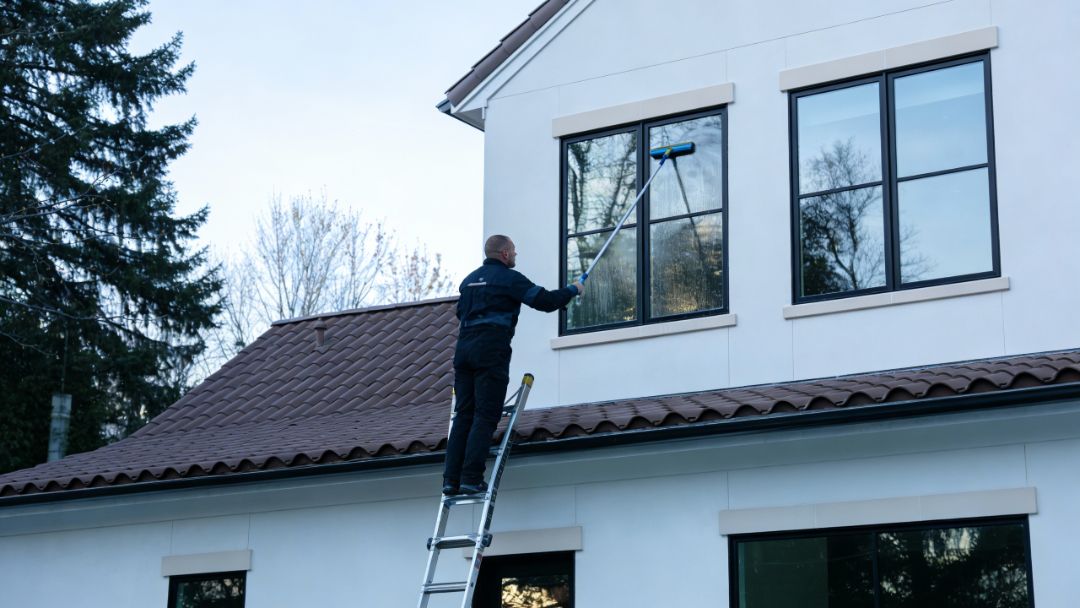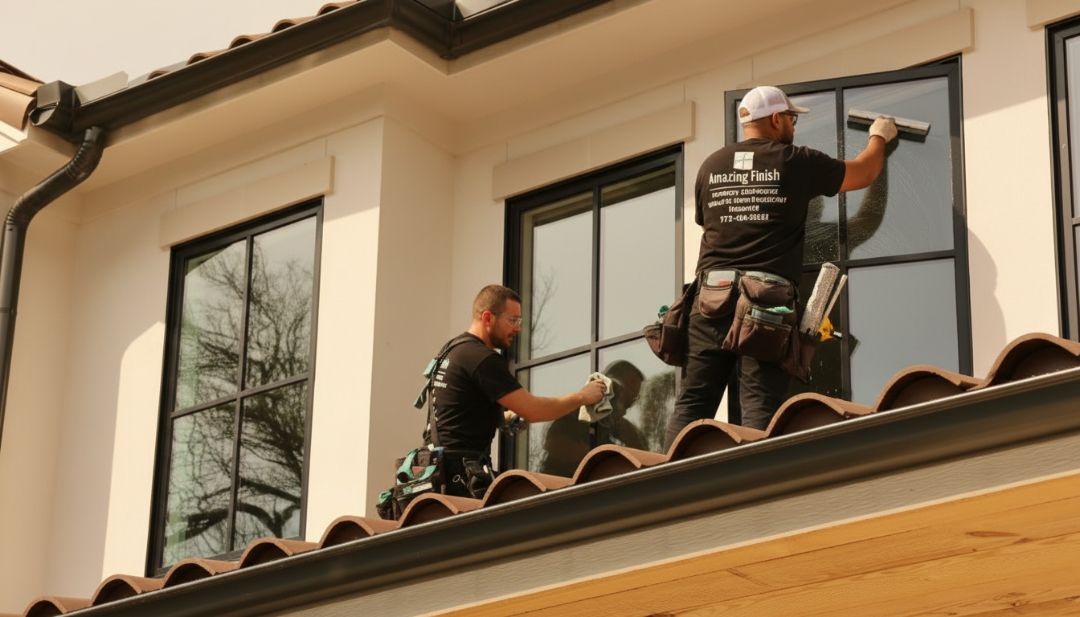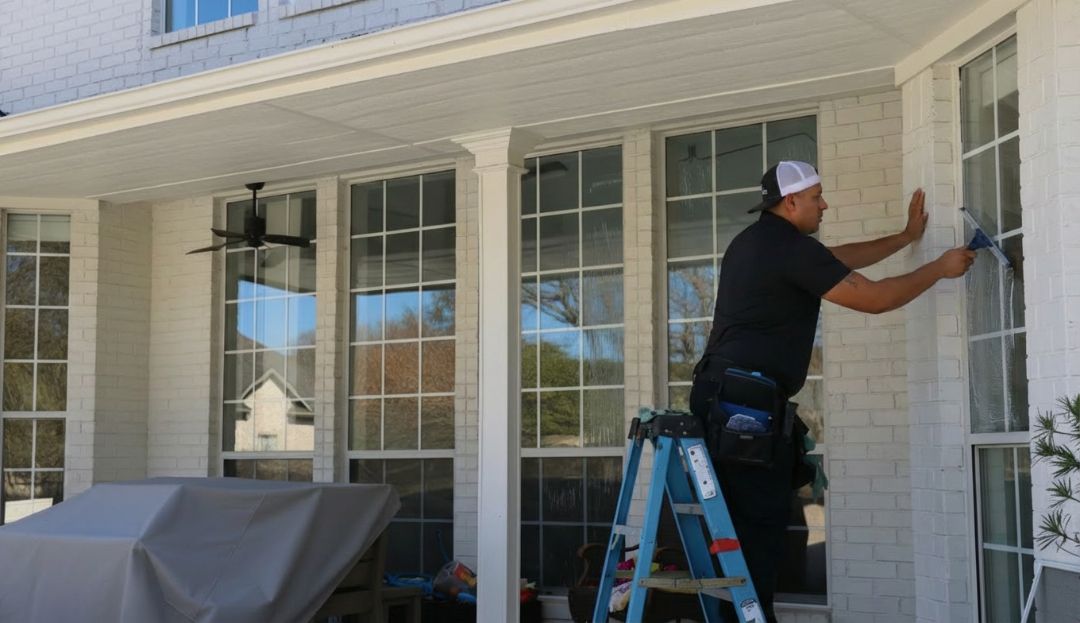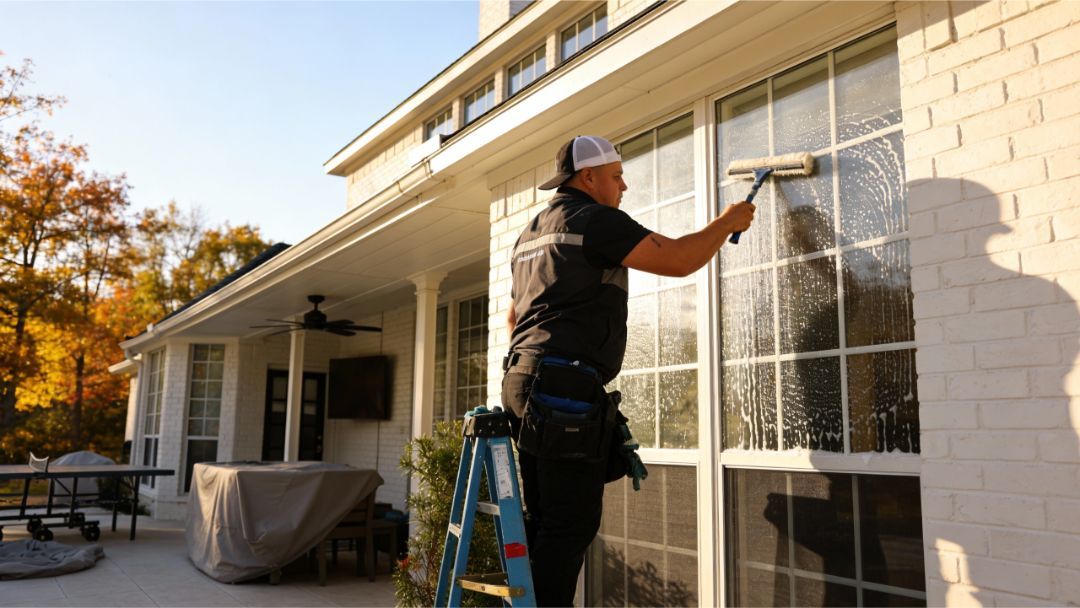Hard Water vs. Acid Rain: What’s Actually Damaging Your Windows?
TLDR;
Hard water leaves behind mineral deposits that stain and etch glass over time, while acid rain chemically corrodes the glass surface, creating cloudy or ashy marks. Both damage your windows, but the signs, causes, and solutions differ, so identifying the culprit is the first step to protecting and restoring your glass.
Understanding the Damage: Hard Water vs Acid Rain
Both hard water and acid rain harm windows in different ways. As a window cleaning expert at Amazing Finish Windows, I see these issues almost every day.
Hard water contains high levels of calcium and magnesium. When it dries on glass, it leaves mineral deposits. Over time, these deposits can bond to the glass and cause etching.
Acid rain has a low pH due to sulfur dioxide and nitrogen oxides from pollution. It interacts chemically with glass, causing corrosion and permanent surface changes.
Knowing which one is affecting your windows will help you choose the right cleaning and prevention strategy.
What Is Hard Water and How Does It Affect Windows?
Hard water is common in many areas of Texas and other parts of the United States.
Key facts:
- Hard water has dissolved minerals, mainly calcium and magnesium.
- When it evaporates, these minerals remain as a residue.
- Over time, the residue bonds to the glass, creating cloudy or chalky spots.
Effects on windows:
- Visible white spots or streaks.
- Stains that feel rough to the touch.
- Etching that dulls the surface.
These marks are common when sprinklers hit windows, when rainwater mixes with hard tap water, or when windows are rinsed but not dried.
What Is Acid Rain and Its Impact on Glass?
Acid rain forms when sulfur dioxide and nitrogen oxides from industrial or vehicle emissions mix with moisture in the atmosphere. This results in precipitation with a low pH.
Key facts:
- Acid rain is more common in urban and industrial areas.
- Even light exposure over time can degrade materials.
- Glass is vulnerable to chemical etching from repeated contact.
Effects on windows:
- Cloudy or hazy appearance that is spread over the glass.
- Dull, ashy texture.
- Etching that cannot be wiped away.
Acid rain damage tends to be more uniform and less spotty than hard water stains.
How to Tell If Damage Is from Hard Water or Acid Rain
You can spot the difference by looking closely at the marks and testing with a simple cleaning method.
Signs of hard water damage:
- White or gray spots in irregular shapes.
- Mineral deposits that scrape off with a fingernail.
- Stains that respond to mild acidic cleaners like vinegar.
Signs of acid rain damage:
- Cloudy haze that covers a wide area.
- Smooth but dull surface.
- Stains that do not fade after normal cleaning.
If light cleaning with vinegar removes the marks, it is likely hard water. If not, and the surface still looks etched, acid rain damage is more likely.
Why Texas Homeowners Should Pay Attention
Texas has areas with very hard water. Some regions also experience atmospheric pollution that can contribute to acid rain. This means many Texas homeowners deal with both problems.
Factors to consider:
- Sprinkler placement near windows.
- Local water hardness level.
- Proximity to industrial areas or highways.
- Frequency of storms.
At Amazing Finish Windows, we often see mixed damage, where hard water stains overlay older acid rain etching. This makes cleaning more challenging.
Cleaning and Restoration Solutions
Hard Water Removal Methods
- Citric acid paste applied to the glass.
- White vinegar solution sprayed and left for several minutes before wiping.
- Professional-grade removers like Sorbo powder or Titan A1.
Acid Rain Damage Solutions
- Vinegar and water for light marks.
- Baking soda paste for stubborn areas.
- Glass polishing compounds for etched surfaces.
- Professional restoration for severe etching.
Safety Tips
- Always wear gloves and eye protection when handling cleaning agents.
- Use microfiber cloths to avoid scratching.
- Avoid strong abrasives that may damage the glass.
Preventing Future Window Damage
- Rinse windows with filtered or softened water after cleaning.
- Adjust sprinklers to avoid overspray.
- Apply protective coatings that resist mineral buildup and chemical corrosion.
- Schedule regular seasonal cleaning, especially after storms.
- Inspect seals and frames to prevent water infiltration.
To keep your windows looking their best, it's also important to understand the
window cleaning mistakes to avoid, especially when dealing with hard water or acid rain damage. Using the wrong methods or products can make these issues worse and even cause permanent glass etching.
Quick Reference Table
| Damage Type | Cause | Appearance | Removal Method | Prevention |
|---|---|---|---|---|
| Hard Water | Mineral deposits from calcium, magnesium | White, chalky spots | Citric acid, vinegar, specialized removers | Soft water rinse, coatings |
| Acid Rain | Low pH from atmospheric pollution | Cloudy, etched haze | Vinegar, baking soda, polishing compounds | Sealants, storm windows |
FAQs
Can acid rain permanently damage windows?
Yes, prolonged exposure can cause etching that requires polishing or replacement.
Is it safe to use acid-based cleaners on glass?
Yes, if diluted and used with caution. Always follow safety instructions.
How often should I clean to avoid damage?
At least once every season or after major weather events.
How to test if damage is chemical or mineral-based?
Try vinegar on a small area. If it fades, it’s likely mineral. If not, it may be acid rain etching.
Why Professional Care Matters
DIY cleaning works for light stains, but deep etching needs professional restoration. At Amazing Finish Windows, we have specialized tools and solutions that restore clarity without risking further damage.
Professional care ensures:
- Proper diagnosis of the damage source.
- Correct cleaning methods for the problem.
- Long-term protection with sealants and coatings.







